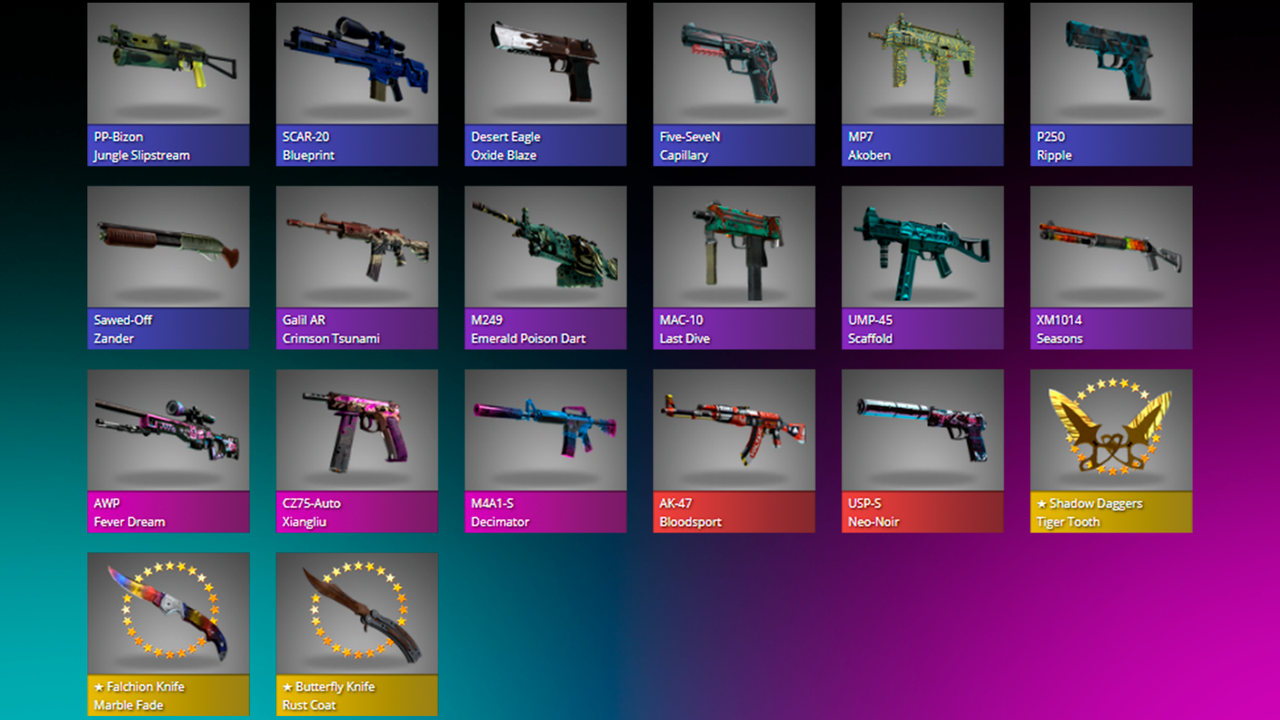CamiForm: Your Source for Diverse Insights
Exploring a world of information across various topics.
Skin Switching Shenanigans: The Quirky World of CS2 Skin Trading
Dive into the wild world of CS2 skin trading! Discover bizarre trades, tips, and the fun behind skin switching shenanigans. Don't miss out!
How to Navigate the CS2 Skin Trading Market: A Beginner's Guide
The CS2 skin trading market can be an overwhelming place for beginners, but understanding its fundamentals can help you navigate it with confidence. Start by familiarizing yourself with the various types of skins available, categorized by rarity and desirability. A helpful way to approach this is by creating a list of skins you are interested in and researching their market prices using platforms like Steam Community Market or third-party trading sites. Remember, market fluctuations can occur frequently, so keeping an eye on trends will aid your trading strategies.
Once you have a grasp on the types and prices of skins, it's essential to understand the concept of trade-ups and skins liquidity. A successful strategy is to invest in affordable skins that have the potential for value growth, which can lead to profitable trade-up opportunities later on. Additionally, engaging in community forums and following social media accounts dedicated to skin trading can provide valuable insights. Joining online groups can also help you connect with experienced traders who can share tips on how to avoid common pitfalls in the CS2 skin trading market.

Counter-Strike is a popular tactical first-person shooter game known for its competitive gameplay and strategic team-based mechanics. Players can enhance their experience with various weapon skins, including the cs2 zeus skins that add unique aesthetics to the game's arsenal.
The Evolution of Skin Trading: From CS:GO to CS2
The world of digital skin trading has experienced a remarkable evolution, particularly with the transition from CS:GO to CS2. Originally, Counter-Strike: Global Offensive introduced players to the concept of virtual skins, which allowed them to customize their in-game weapons. This practice quickly grew into a thriving marketplace, with various platforms facilitating the buying, selling, and trading of skins, often leading to the emergence of a new economy within the gaming community. As players sought rare and unique items, the valuation of skins skyrocketed, sometimes reaching thousands of dollars for a single piece, driven by both demand and the allure of rarity.
With the launch of CS2, the skin trading landscape has further transformed. The introduction of new graphics and gameplay mechanics has not only refreshed the appeal of the game but has also renewed interest in its trading aspect. Players are now presented with an even broader array of items, including new skins that echo the CS:GO legacy while offering fresh designs. As the skin trading community adapts to these changes, discussions regarding item valuation, rarity, and market trends continue to evolve, highlighting the ongoing importance of this dynamic facet of the gaming ecosystem.
What Makes a CS2 Skin Valuable? Unpacking the Factors
When it comes to CS2 skins, several key factors contribute to their overall value. First and foremost, rarity plays a significant role; skins that are classified as rare or have limited availability tend to fetch higher prices in the market. Additionally, the design and aesthetic appeal of a skin can greatly impact its desirability among players. Unique patterns, vibrant colors, and intricate details make certain skins stand out, turning them into coveted items. Furthermore, the quality of the skin—ranging from Factory New to Battle-Scarred—also affects its market value, with cleaner skins typically being more sought after.
Market trends and community sentiments play an equally important role in determining a skin's value. Skins that gain popularity due to their association with professional players or esports events often see a significant spike in demand. Keeping an eye on market trends and understanding community preferences can provide valuable insights for aspiring traders. Moreover, historical sales data can inform potential buyers about the price range for specific skins, helping them make informed decisions. In conclusion, assessing the value of a CS2 skin requires a comprehensive understanding of its rarity, design quality, market trends, and community interests.